This is probably the most frequently encountered Serapias in the eastern Mediterranean and has only been known as a distinct taxon for just over a century, having first been described by Camus from Corfu in 1908. It is named after the nineteenth century French botanist Monsieur P. Bergon.
Much of its recorded existence has been spent as a subspecies to either S. cordigera or latterly S. vomeracea and in both cases as subsp. laxiflora. Some botanists remain sceptical about bergonii's full species status and it's certainly true that in some populations, differentiating this plant from other Serapias species can be difficult. This is due both to natural variation and significantly to hybridization, which over the years has contributed to the creation of huge intermediate swarms. An interesting characteristic of S. bergonii is that together with S. orientalis, it seems far more prone to hypochromy than its cousins, it also shows a predisposition towards low anthocyanin production, a condition which leads to very pale, often yellowish/orange colouration.
S. bergonii is generally shorter and less robust than S. vomeracea but with a relatively longer inflorescence and bracts that do not exceed the length of the hood. In S. vomeracea, the bract always significantly exceeds it, creating a distinctive spiky appearance. As can be seen from the photos, colouration is highly variable, ranging from hypochromatic pale yellow through anthocyanin deficient yellow and orange to "standard" Serapias brick red and Mauve.
The species is distributed throughout the eastern Mediterranean as far as Anatolia and Cyprus, reaching Calabria and Sicily in the west. The illustrations here are from Gargano, Italy and various sites in Greece and the Aegean dating from early to late April.
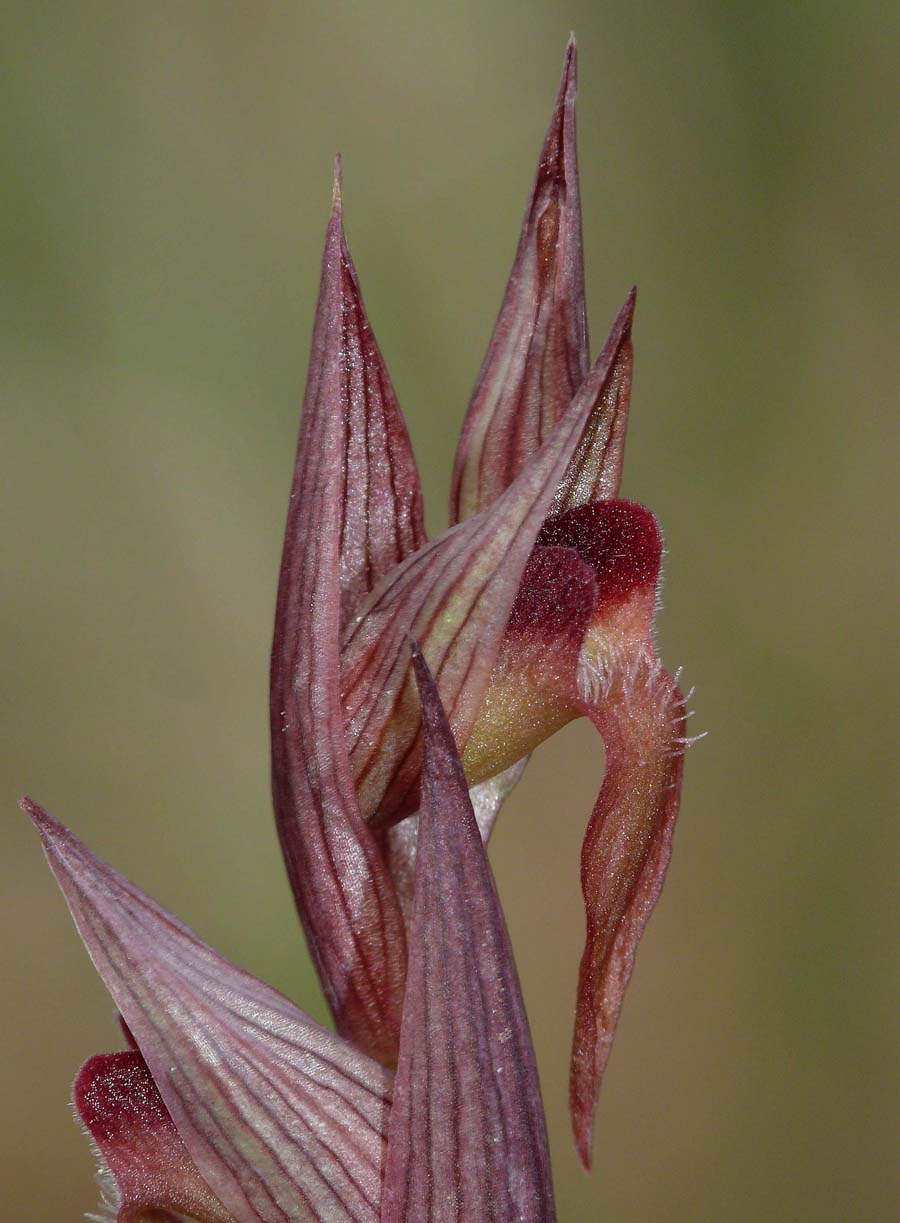
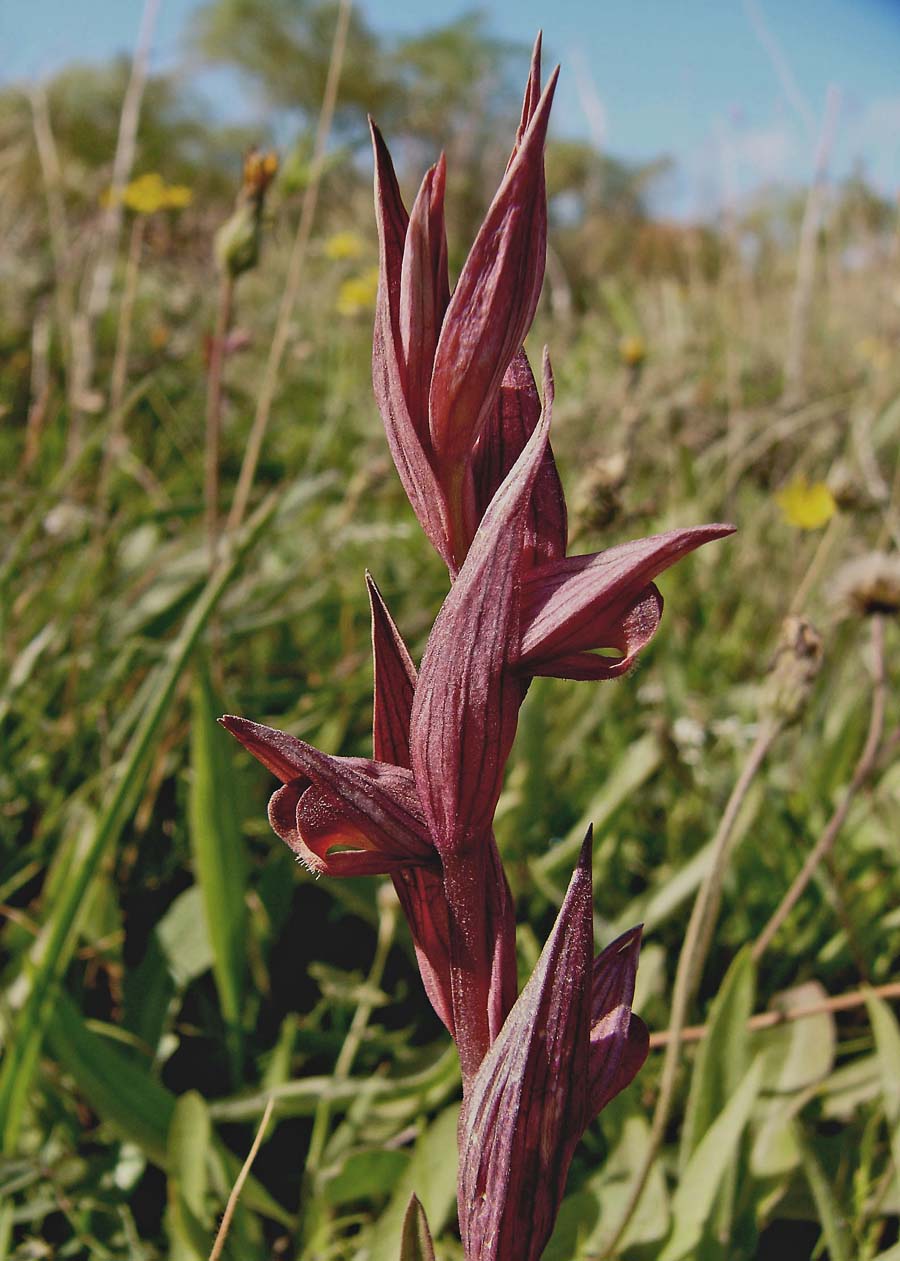
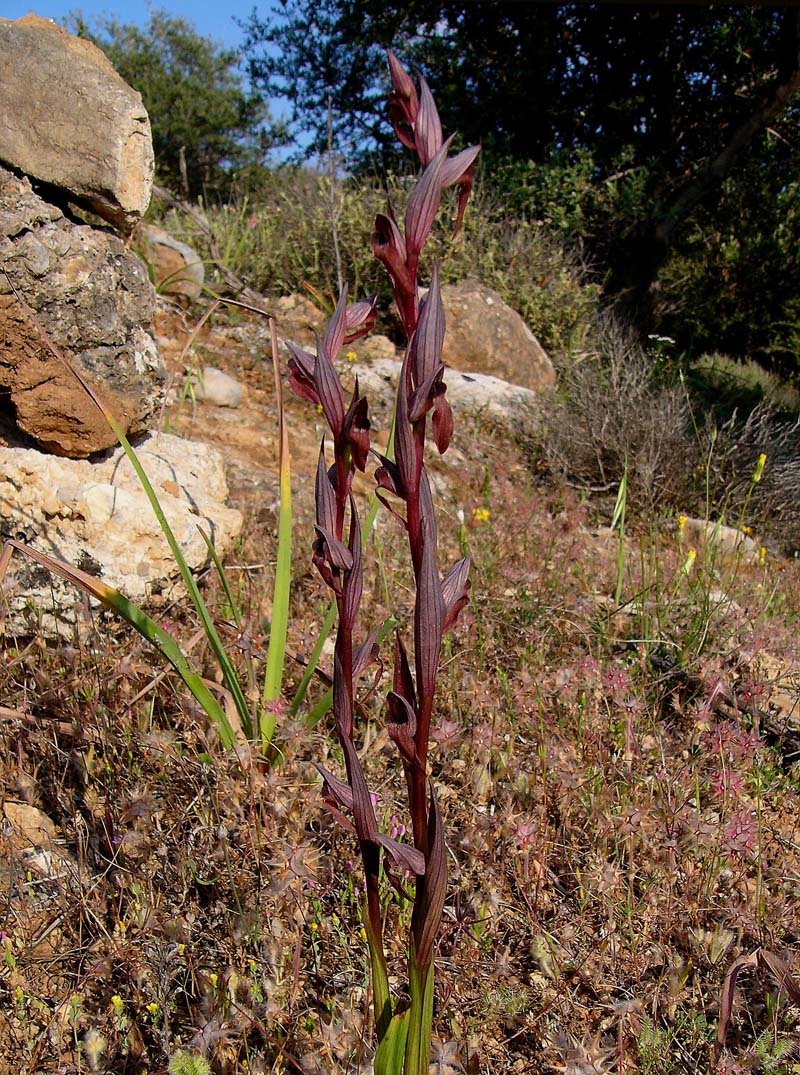
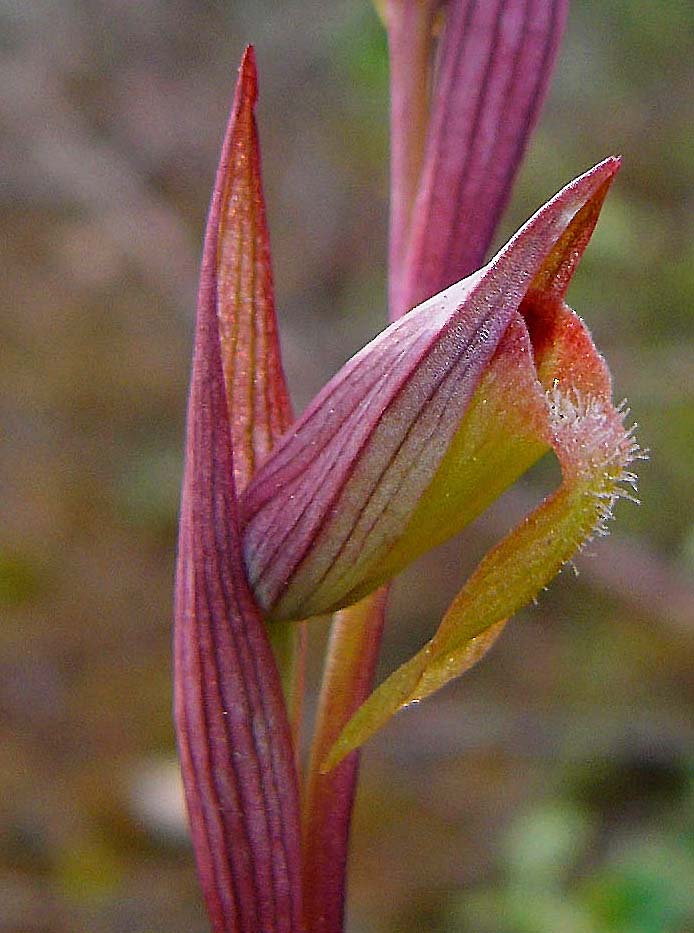
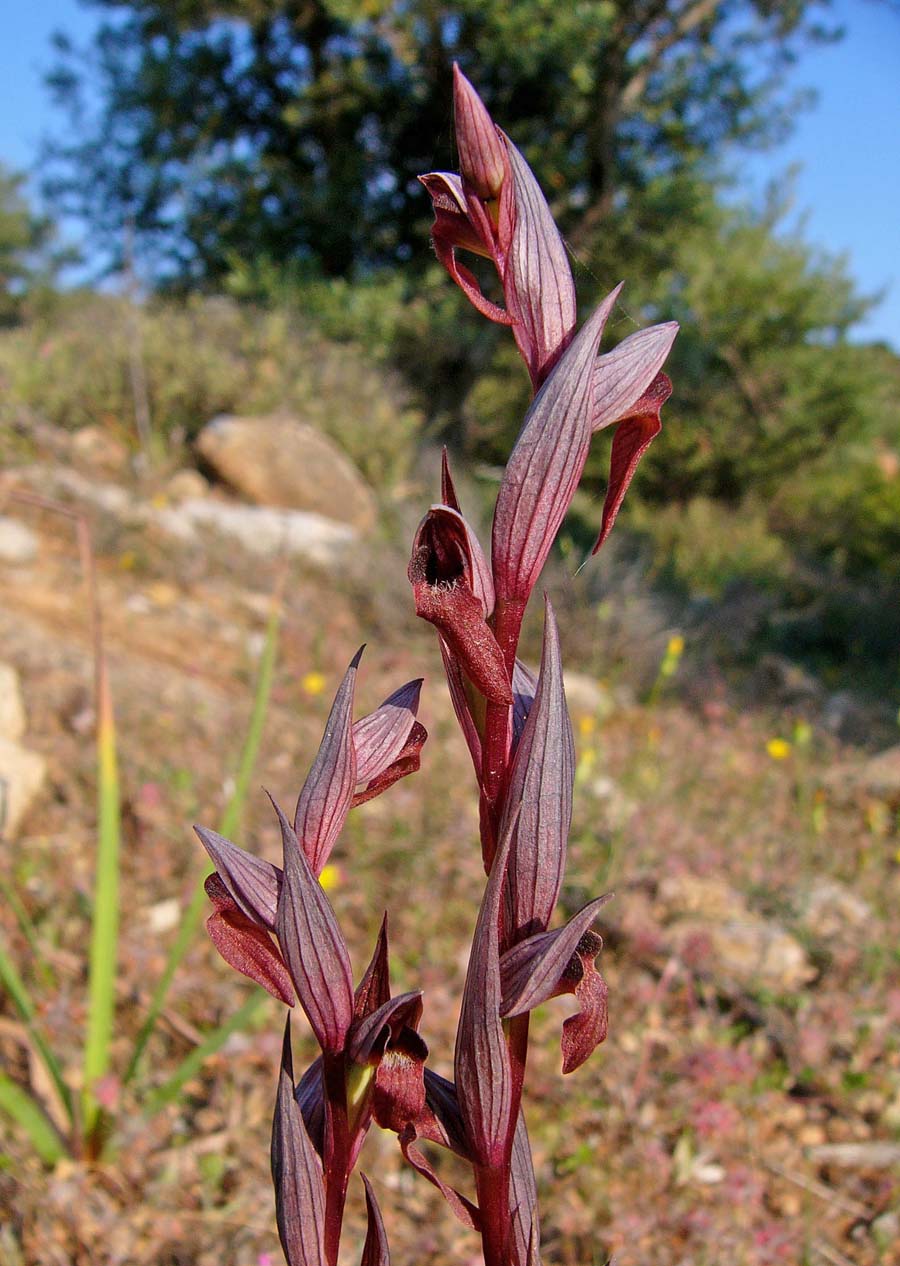
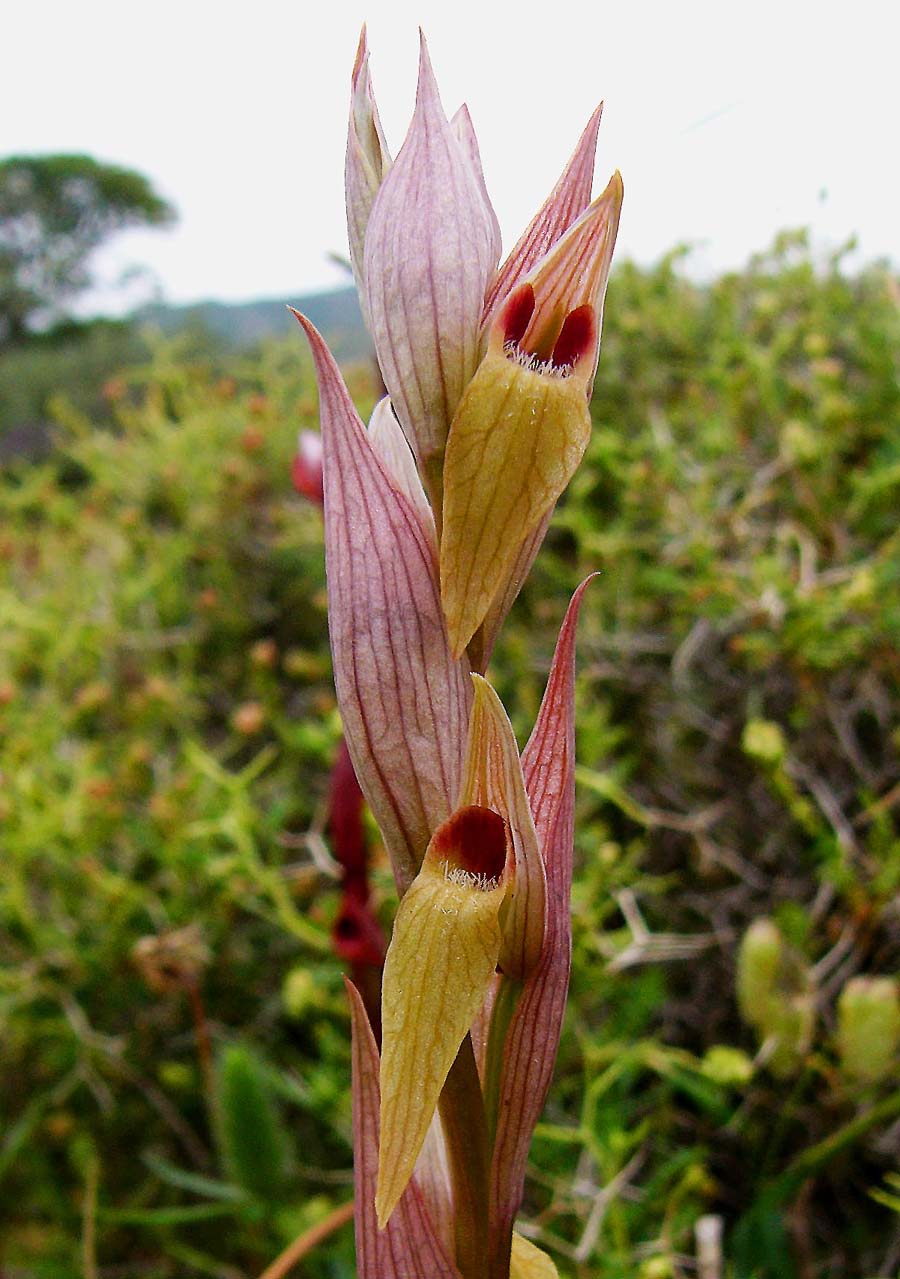
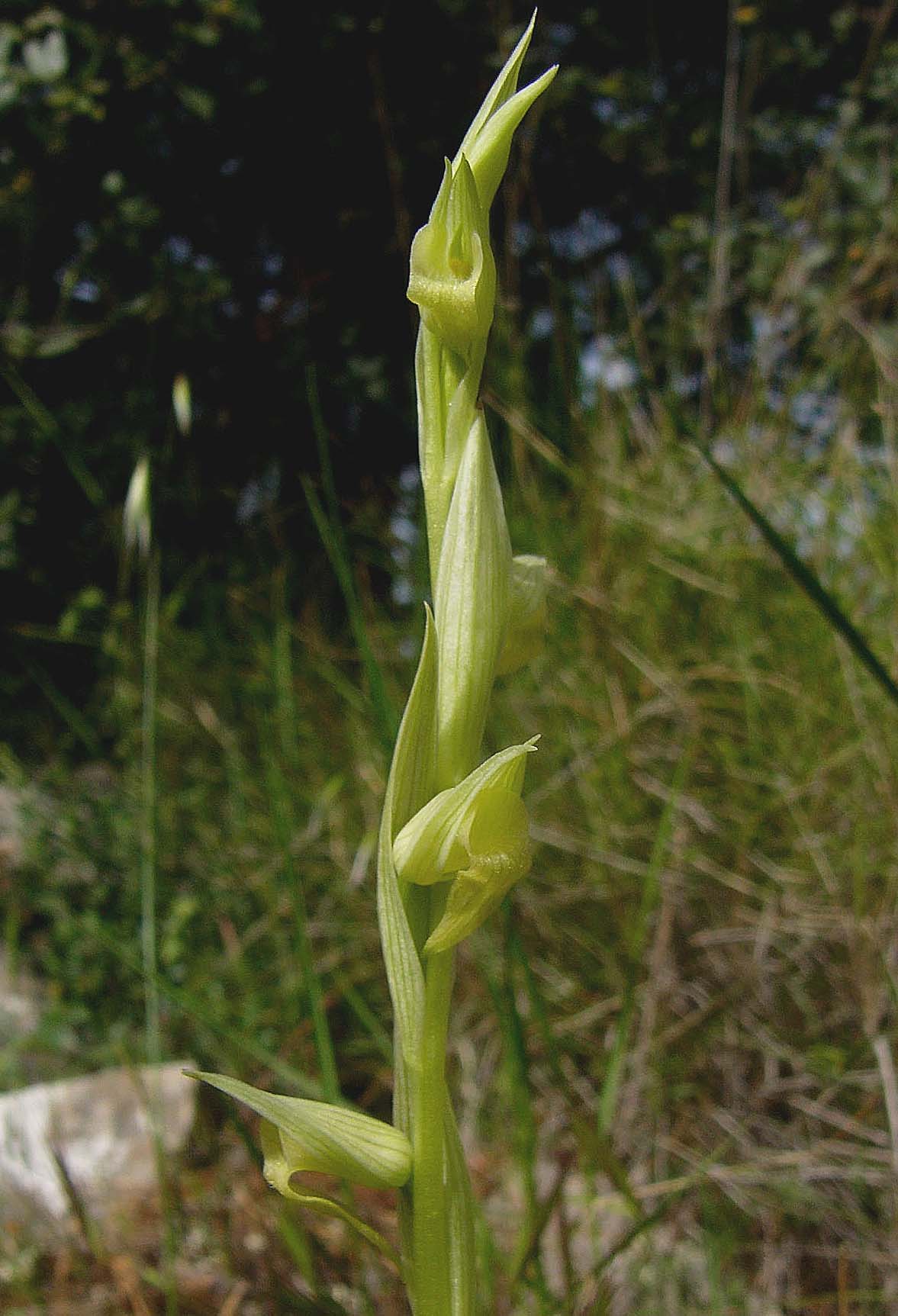
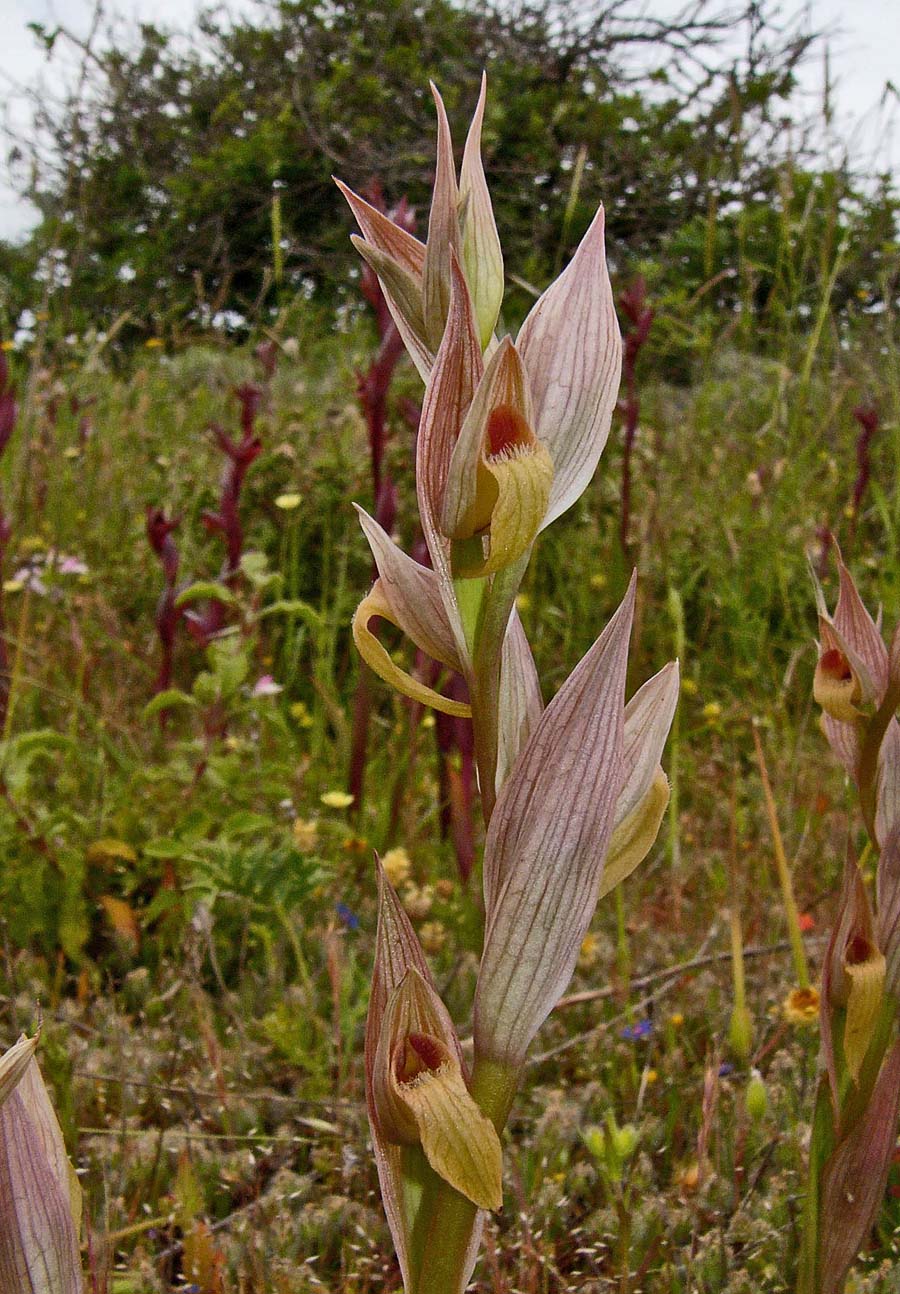

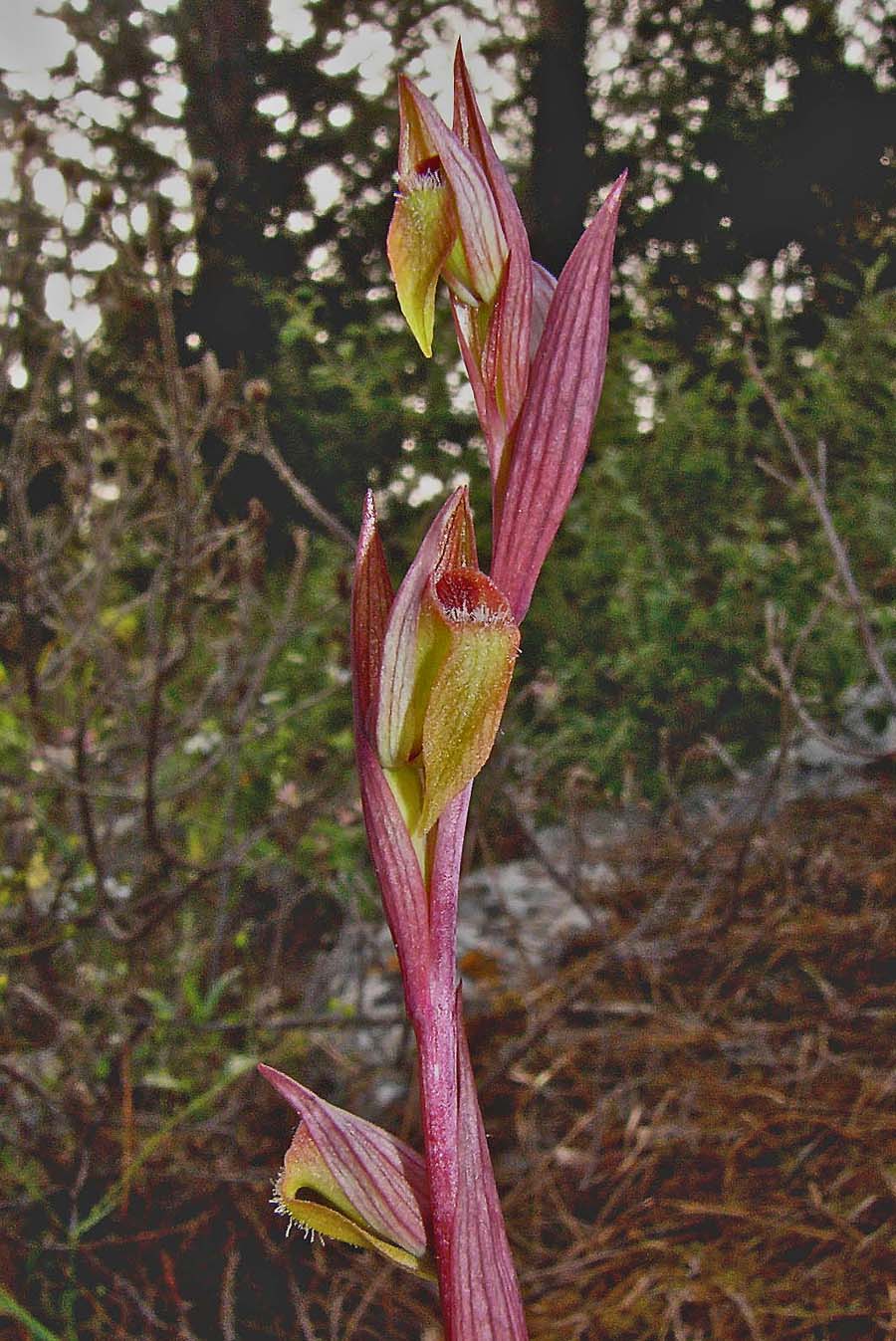
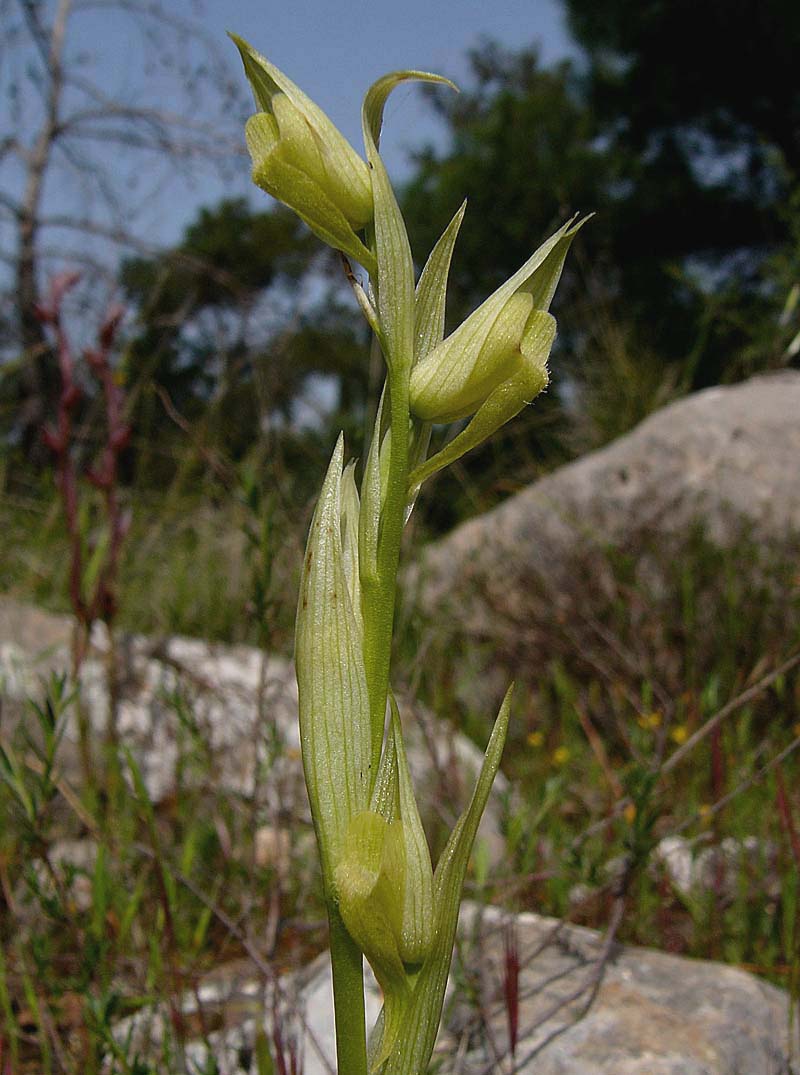
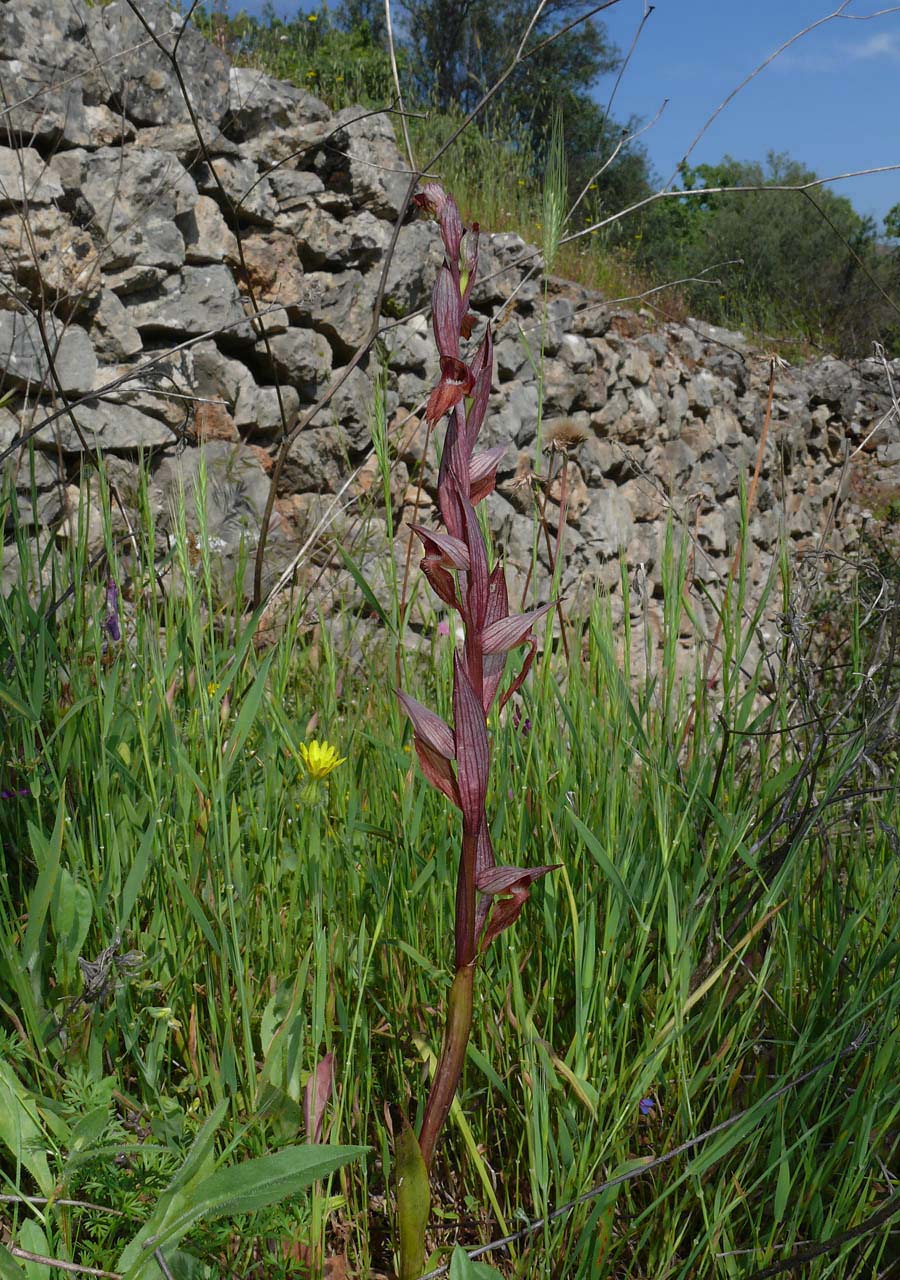
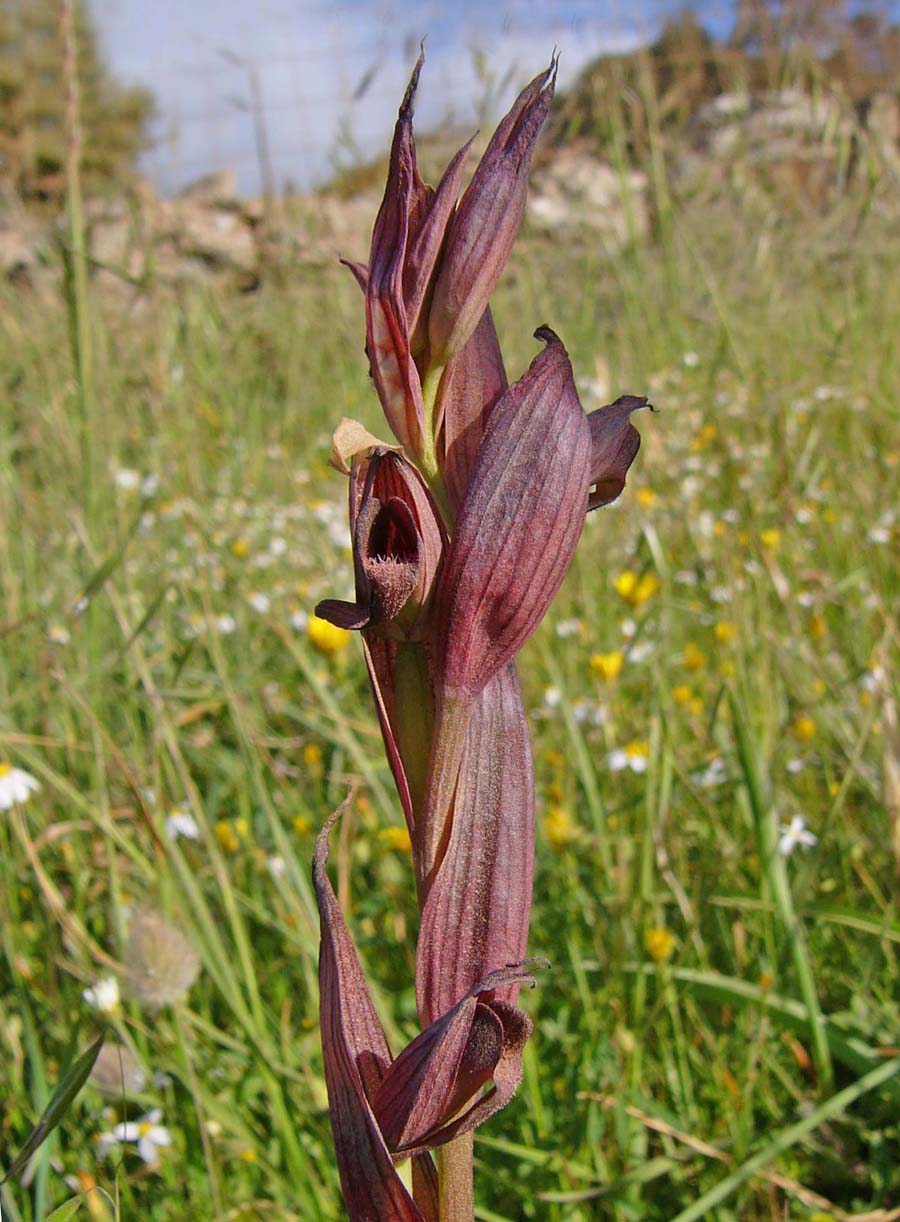
.